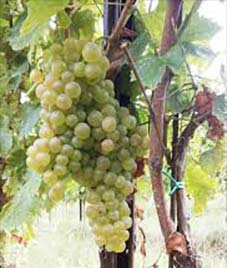 DELIVERY FROM £4.95
DELIVERY FROM £4.95 FREE DELIVERY FOR ORDERS OVER £100
FREE DELIVERY FOR ORDERS OVER £100Home » Community » Wine and Grape Guide » Maceratino

The Maceratino grape, a rare and ancient white variety, has been cultivated for centuries in the Marche region, particularly in the province of Macerata, from which it takes its name. Its cultivation extends into neighboring areas such as Ancona and Ascoli Piceno, where it plays a key role in the production of Bianco Piceno DOC and Colli Maceratesi DOC wines.
Believed to be part of the Greci group - a collection of ancient grape varieties introduced to Italy by early Greek settlers - Maceratino is also known by several synonyms, including Maceratino Greco and Maceratino Castellano.
Today, this native Italian grape is increasingly rare, even in its historical heartland. The decline in its cultivation is largely due to the dominance of Verdicchio, a more commercially viable grape with stronger enological characteristics and lower production costs, which has overshadowed even more noble varieties like Maceratino.
Maceratino features white, medium-sized, spheroidal berries with a medium-thick, waxy skin that ranges from yellow-golden to brown-streaked. The clusters are typically medium-large, cylindrical-conical, and compact, while the leaves are large, orbicular, and lobed.
The vine is known for its abundant and consistent yields, showing adaptability to different soils, climates, and exposures. Depending on the biotype, the grape can vary in sugar content and productivity.
Wines made from Maceratino grapes are typically pale straw yellow in color. The nose is delicately fragrant, while the palate is dry, neutral, and fruity, with a light body. These qualities make it a subtle but elegant choice among Italian white wines.



Before we say ciao, why not join our newsletter & stay up to date on everything happening on planet Italyabroad.com